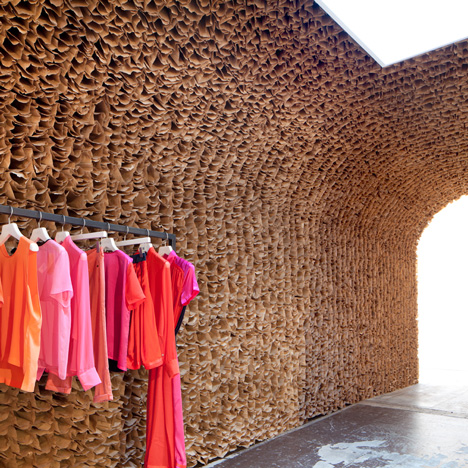
OWEN by Tacklebox
Twenty-five thousand brown paper lunch bags line the wall and ceiling of OWEN, a new fashion boutique in New York's Meatpacking District by Jeremy Barbour of Brooklyn architects Tacklebox.
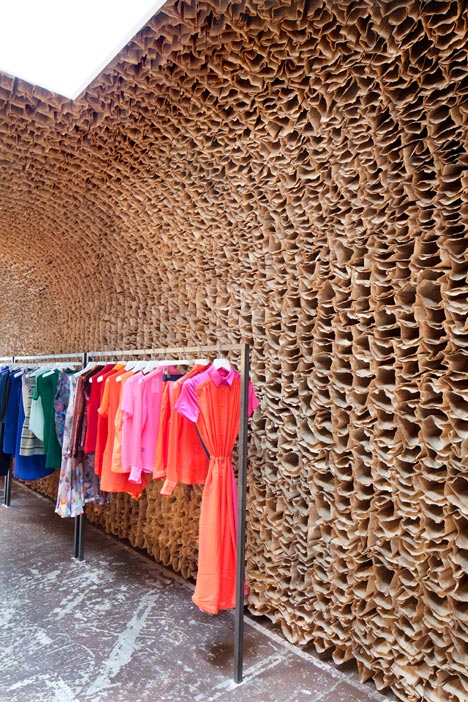
The bags create a honeycomb effect in the 170 square-metre store, located in a former industrial building at 809 Washington Street.
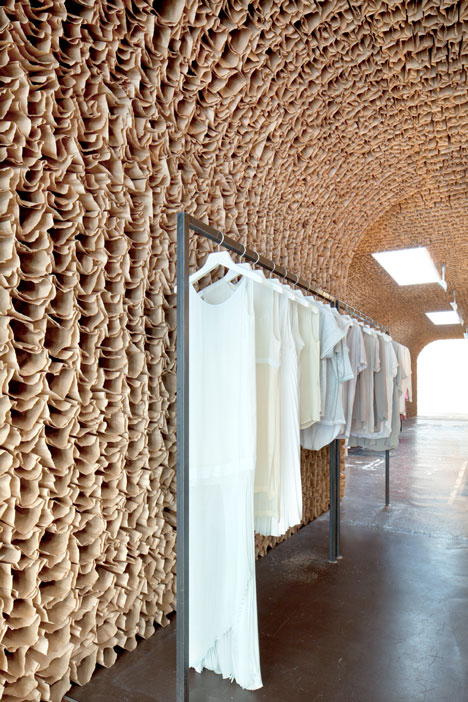
OWEN, established by fashion graduate Phillip Salem, stocks items by established and emerging designers and aims to give customers the kind of personal service usually reserved for celebrities.
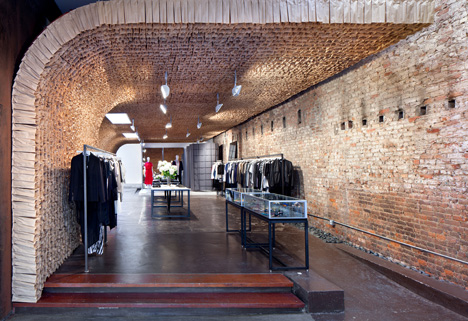
Apparently it took nine days to staple all 25,000 bags to the store's wall and soffit.
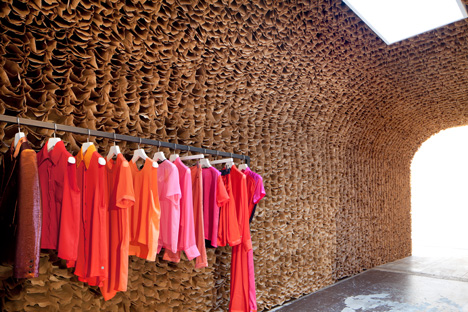
Here's some info from architects Tacklebox:
OWEN
On May 7th, Phillip Salem will open the doors to his dream, an 1,800 sq ft boutique in New York City’s fashionable Meatpacking District that will be home to over 70 emerging designers and eminent brands, many of which cannot be found elsewhere. OWEN fuses organic and modern architectural elements in an innovative environment differentiated by personalized service.
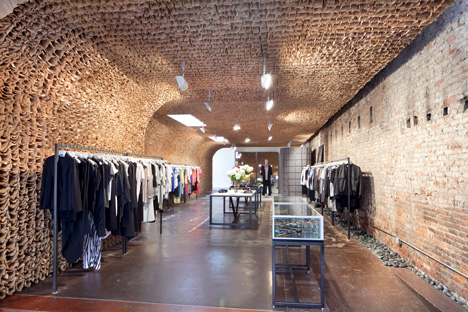
“I am in business to not only inspire people through clothing, but to captivate and ignite the client's artistic mind through a non-egotistical and creative atmosphere. I hope to accomplish an evolution of a client's personal style through the OWEN aesthetic with the help of our creative team to make the client feel exceptional in the clothes they buy and skin they live in.
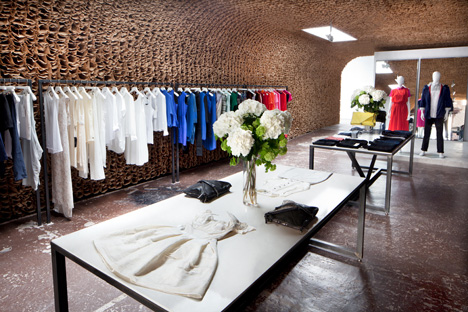
Overall, I want to bring the experience and fun back to in-store shopping in New York City,” Phillip Salem, owner.
Phillip Salem attended The Fashion Institute of Technology and quickly built a name for himself as WFIT’s New York Fashion Week Senior Correspondent, handling backstage show coverage and interviews with celebrities and designers.
After graduating, Salem started to conceptualize what was to become OWEN, a home for men’s and women’s brands in the contemporary and designer market that were not showcased in downtown Manhattan. The name comes from Salem’s middle name and is an homage to his late mother, Eva, whose maiden name was also Owen. Inspired by more than the individual collections themselves, though, OWEN is inspired by an experience, one Salem believes has been lost from the retail world.
The difference is in the details, from the customer service (The OWEN training manual's first page reads, "Everyone that walks in the door should be treated like Beyoncé) to the friendly inviting atmosphere. Salem aims to create, in a downtown environment, a luxurious shopping experience for all potential customers, whether they are Beyoncé or not.
The focus is on clothing that is modern, structured and detail oriented with a subtle flair for the dramatic. Wearable pops of color and few graphic prints adorn a large black and white story. Designers featured include Vena Cava, Robert Geller, Timo Weiland, Rad by Rad Hourani, Patrik Ervell, and Henrik Vibskov, Ashley Rowe, Ostwald Helgason, Tim Hamilton and Jen Kao among others. The selection is meant to be in style without being trendy so the customer can wear a piece for ten years, say, without feeling outdated.
The boutique is designed by architect Jeremy Barbour of TACKLEBOX Architecture, who is also known for the 3.1 Phillip Lim store, multiple Aesop stores in New York City as well as the Vena Cava Offices and Showroom and Shipley & Halmos Showroom among other projects. He has taught at Pratt Institute’s School of Architecture, NY Institute of Technology and currently teaches at Parsons the New School for Design and Columbia’s Graduate School of Architecture Planning and Preservation.
In response to the rich history of the space and through the juxtaposition of industrial elements with the handmade, Barbour sought to create a place that is both familiar and timeless. OWEN features Barbour’s latest concept of 25,000 brown paper bags on a continuous surface that arches from floor to ceiling. The repetition of the paper bags results in a honeycomb-like structure that defines a warm, organic volume that sits within the existing industrial brick and concrete space. Additionally, all clothing, accessories, and jewelry are displayed on quartz slab tables, blackened steel hang-bars and steel and glass vitrines whose linearity and crisp details sit in contrast to the delicate texture of the paper arch beyond.
The project is the first in a series of signature stores for the emerging retailer OWEN. 809 Washington defines a retail environment that introduces the visitor to the brand and spirit of OWEN and serves as a preview of stores to come.